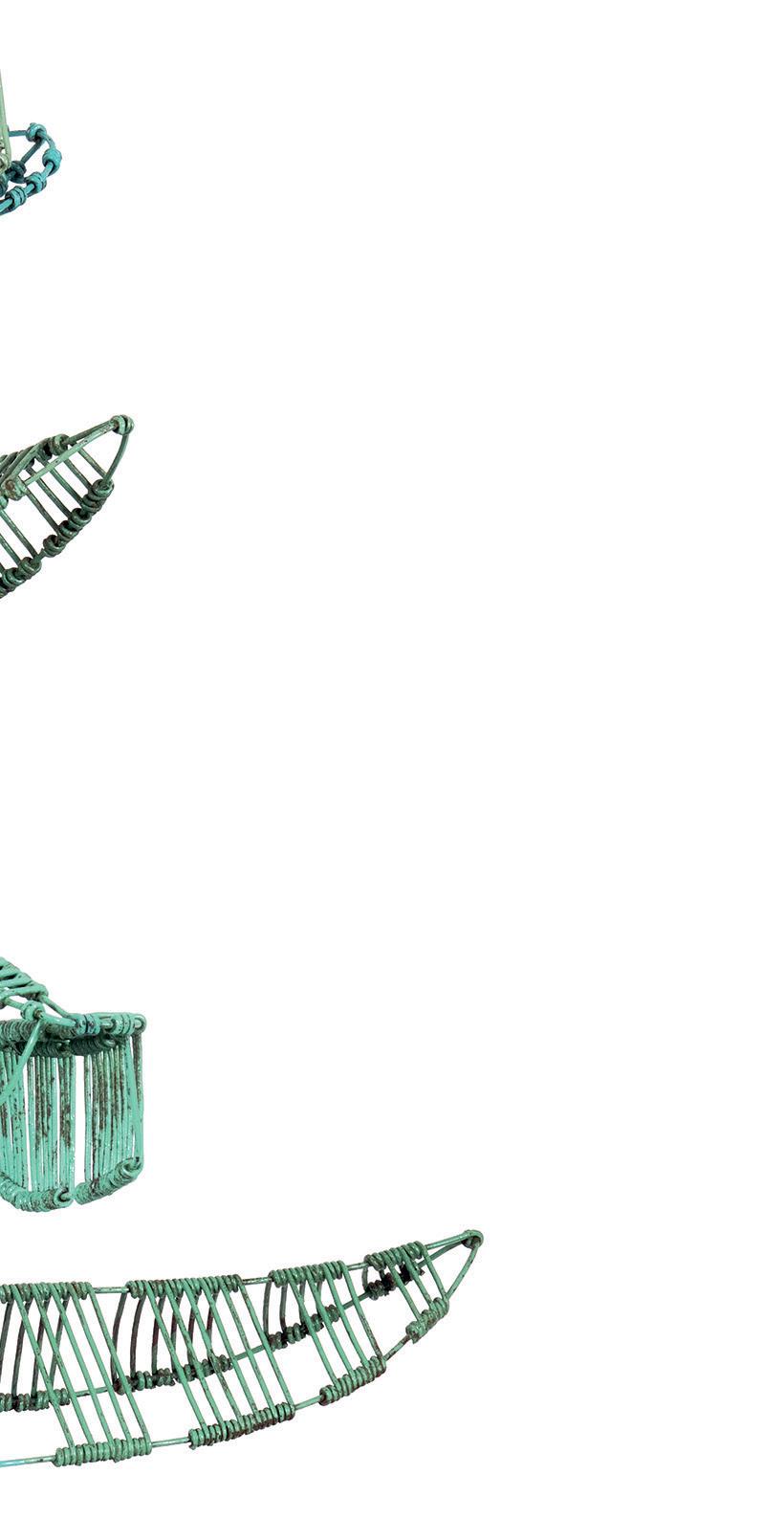

HAYWARD OUBRE
structural integrity

structural integrity
Edited by Katelyn D. CrawfordContributions by Amalia K. Amaki, Katelyn D. Crawford, Rebecca L. Giordano, Shawnya L. Harris, Marin R. Sullivan, Diana Tuite, and Hina M. Zaidi
With recollections by Carter B. Cue, Paul A. Gary, Mervin Anthony Green, Noah Jemisin, Brenda and Larry Thompson, and an excerpt from an unpublished manuscript by Floyd W. Coleman, Sr.
Birmingham Museum of Art, Birmingham, Alabama, in association with D Giles Limited

or countered the work of other theorists, but his emphasis on this approach demonstrates his belief that art and science were in alignment, not in competition.
Oubre’s time in Winston-Salem proved fruitful for his students, who benefited from Oubre’s scientific research and creative experiences, which, in turn, expanded his own artistic production. As in Alabama, Oubre revolutionized Winston-Salem’s program by becoming the department’s chairperson and pressing for a major in art. The school’s newspaper, The News Argus, documented an exhibition of work by the students under Oubre’s leadership:
This exhibition consisted of the better creations by students this school year. Primarily it is dominated by paintings emphasizing the basic color schemes and art. The students applied pigments and surfaces using the primaries and secondaries or using other techniques employed in the structural approach. The students feel that their power of communicating
through art has been enhanced by the study of art principles.⁹
The article goes on to discuss the students’ desire for a permanent art major, along with better tools and materials for conducting their work. Such concerns foreshadowed Oubre’s advocacy for continuous art instruction at the university and also his dedication to providing in-depth instruction on the fundamentals of painting.
By the late 1960s, carefully constructed geometric figures and atomic imagery signaled Oubre’s interest in space-age discoveries and innovations in computer technology, robotics, and artificial intelligence. Oubre’s engagement with science and astronomy became even more pronounced during the space race of the early 1960s. In 1962, Oubre completed Flight into Space, an oil painting which depicts interplanetary movement. (cat. 39) This painting pre-dates the historic 1969 Apollo 11 landing on the moon which provided artists such as Alma
Figure 6.2


2 Self-Portrait (first strike), 1948, etching and drypoint on paper, 26 1/2 × 20 3/4 in. (framed), The Paul R. Jones Collection of American Art at The University of Alabama, PJ2008.0925

3 Self-Portrait, 1948 (printed 1993), etching, 22 1/4 × 14 5/16 in. (sheet), National Portrait Gallery, Smithsonian Institution; the Ruth Bowman and Harry Kahn Twentieth-Century American Self-Portrait Collection, S/NPG.2002.309




